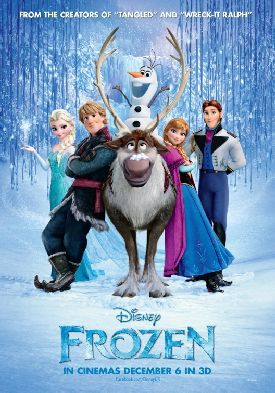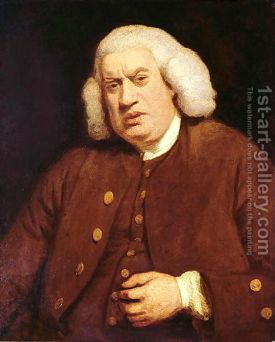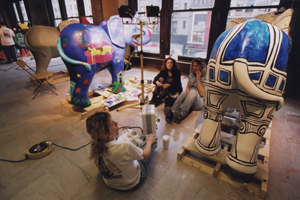Frozen in Ideological Time
From The American SpectatorOver the Thanksgiving weekend, members of the self-designated 501st Legion of Star Wars “re-enactors” came to Washington, D.C. to take part in the “crowd funding” of a proposed Museum of Science Fiction there. The whole enterprise smacked of the fantastical. How, to begin with, do you “re-enact” something that never happened? These people live in a fantasy of a fantasy. The career of the moving spirit behind the new museum, a self-proclaimed screenwriter named Greg Viggiano, appears to be equally fantastical, as he has no screen-writing credits on the IMDB. He also appears not to know that there is already a Museum of Science Fiction in Seattle, lavishly funded by the Microsoft billionaire Paul Allen. It is housed in a fantastical structure designed by Frank Gehry and designated by Forbes as one of the world’s ten ugliest buildings. Maybe the new museum, with the cachet of being housed in our nation’s capital, will try to surpass it.
Moreover, the very idea of a “museum” of the fictional is a fantasy: the kind that logicians call a category mistake — like Cartesian mind-body dualism, invented families or gay marriage. In practice, the pretend “museum” can only be a tarted up archival collection of manuscripts, photographs and old movie or TV props — in other words, secondary materials and media fetishism like that of the so-called “Newseum,” a similar vanity project that is already disfiguring Pennsylvania Avenue in Washington. Yet all such pop-cultural junk could hardly be dignified with a museum if it had not been dignified first by being treated seriously in the Arts pages of The New York Times or The Wall Street Journal alongside traditional or “serious” arts. The very concept of “seriousness” as applied to the arts hardly has any meaning now, ever since — as the Times’s film critic A.O. Scott announced nearly a decade ago — “children’s entertainment has become the cornerstone of the American movie industry, not only commercially, but artistically as well.”
But cartoons and the cartoon-like dominate to the extent that they do not only because so much of the movie audience today is made up of juveniles but also because they are the means of re-mythologizing the culture along progressivist lines with the help of the sort of fantasy known as ideology. Star Wars was a big part of that effort, of course, as was Star Trek. Thirty years ago when I was a teacher, I once assigned a class to do a presentation on someone each pupil regarded as a hero. One boy gave his talk on Captain James T. Kirk. I made him go away and re-do it on someone real, as I thought he was mocking the assignment; but I wonder now if, even then, he simply had no better idea of heroism. Certainly you would be surprised nowadays if any child didn’t assume that what was wanted was an account of his favorite superhero. Real heroes, being no longer politically correct and gaining no advantage from their mere reality, can no longer compete with the fantastical kind.
The job that has been done on girls, while less well-recognized has been no less thorough than that which has been done on boys. Princesses are to girls what superheroes are to boys: objects of admiration not in spite of but because of their unreality. Recently Harrod’s teamed up with Disney to introduce a Disney-world-style “Bibbidi Bobbidi Boutique” to London — “a magical beauty salon,” according to Disney, “where any little girl can make her dream of becoming a princess come true.” That should tell you something about the Disney concept of truth. Tanya Gold of the London Sunday Times fulminated against the move as a politically retrograde step, but she must not have seen many Disney princesses of recent years. Now they don’t just look pretty until Prince Charming comes along. They’re more like “Princess” Leia of Star Wars, their faux-royalism mere camouflage as they doff their tiaras to lead the revolution.
The latest example comes with Frozen, which is similarly a tale of disenchantment masquerading as enchantment. Getting real would truly be a momentous step for Disney if real meant real, but of course it doesn’t; it means getting ideological. Said to have been “inspired by” Hans Christian Andersen’s The Snow Queen, it retains virtually nothing from that characteristically weird but undoubtedly enchanted paean to childish innocence — which is pre-sexual, pro-Christian and anti-rationalist. Instead, all the fairy tale conventions are deliberately subverted, along with the “gender” norms on which they so often depend. Instead of moral lessons, they teach the avoidance of “stereotypes”; instead of the examples of piety that are frequent in Andersen, there are therapeutic nostrums about being solicitous of self; instead of the wicked Snow Queen, there is only poor, differently-abled Elsa (voiced by Idina Menzel) who suffers through no fault of her own from a tendency to freeze everything she touches. When she retreats to her remote ice palace it is not to harm anyone but to avoid harming anyone — that and being free at last to be “who I am.”
The real heroine is her flame-haired younger sister, Princess Anna, voiced by Kristen Bell, who for no apparent reason has been kept from any contact with the world outside the palace — or, lest she be frozen, with Elsa inside it — from the time that the girls’ parents, the king and queen of Arendelle, are lost at sea until the day, years later, of Elsa’s coronation as queen. On that day Anna, untouched by jealousy of her sister, only wants to experience the world “For the first time in forever” (in the words of her show-stopping song), but she immediately meets and, in a parody of the traditional fairy tale, decides to marry handsome prince Hans (voiced by Santino Fontana) who has come to town for the coronation. Elsa forbids the match and, in the emotional scene which follows, freezes the whole kingdom before fleeing to her ice-palace. The rest of the film consists of Anna’s quest to find her and bring her back to Arendelle. Hans is left to rule in her stead.
Anna is helped by a working class lad named Kristoff (Jonathan Groff), who talks to his comical but mute reindeer, and by a typically garrulous comical Disney sidekick in the shape of a snowman named Olaf (Josh Gad). When Anna is frozen by her sister, she must be rushed to Hans in order to be revived by true love’s kiss. But the handsome prince turns out to be in league with the bad guys from Weasle-town — whose badness appears to consist principally of a desire to trade with Arendelle — and is prepared to let her die, while Kristoff seeks help from the stone-like trolls, who are good-guys with a miraculously healing touch. Naturally Anna survives, but she gets her true- love kiss from her sister, whose new-found emotional availability thaws her own heart, while Kristoff comes late to the party and remains only a hook-up. He gets a new sleigh out of the deal, however, and a typical crony-capitalist’s corner on the ice market. Whatever subsequent relationship he may have with Anna takes a definite backseat to that of the newly-reconciled sisters.
In an odd way, therefore, the movie does have something in common with Andersen’s tale, in which his heroine, little Gerda, and her opposite sex playfellow, little Kay, are kept firmly in the realm of pre-pubertal relationships throughout — or until, on the final page, they pass through the door of their childish playroom to discover that they have both grown up without noticing it. Yet they are also said to have remained children at heart — something which the supplied Biblical text of the original (“Except ye become as little children, ye shall in no wise enter into the kingdom of God”) can’t quite succeed in making look un-creepy. But the mystery is again domesticated in the movie with the help of the feminist tribute to sisterhood and freedom from the illusions of romance.
In another assault on the romantic idea of fated love, much is made of the foolishness of Anna in wanting to marry a man she has just met — love at first sight once having been thought an inevitable part of princessing if not, obviously, of Andersen’s tale. Gerda, though not a princess, also goes on a quest to find Kay when he falls into the clutches of the Snow Queen. Having tried to escape by praying the “Our Father,” Kay could only remember the multiplication tables, which is Andersen’s dig at disenchanting science. Kay’s problem is that he has got not only a frozen heart but a piece of glass in his eye that causes him to see only the ugliness in the world and not the beauty. It’s a good metaphor for the ideological lens through which the makers of Frozen and their colleagues at Disney see the world and the reason, I suspect, why they scorn the traditional fairy-tale’s concern with the momentous question of how to be good in favor of fantasy’s false promise of protection from those unpleasant realities that make goodness necessary.
Discover more from James Bowman
Subscribe to get the latest posts to your email.





